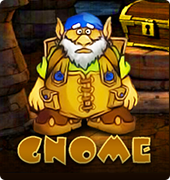| Виробник | IronDog |
| Кол-во линий | 386 |
| Кол-во барабанов | 9 |
| Фриспіни | Так |
| Бонусний раунд | Відсутнє |
| Мобільна версія | Так |
| Гра на подвоєння | Відсутнє |
Грати в Wild Jester в онлайн казино:
Пин Ап казино Официальный сайт Pin Up Casino играть онлайн.
The terms pin-up model (also pin-up girl) and male pin-up identify and describe a model whose mass-produced pictures and photographs have wide appeal within the popular culture of a society. Pin-up models usually were glamour models, actresses, and fashion models whose pictures were intended for informal, aesthetic display, i.e.
Пин Ап Казино — Официальный сайт Pin Up Casino вход в.
pinned-up onto a wall; thus the etymology of the phrase pin-up girl. Moreover, beginning in the 1940s, pictures of pin-up girls were also known as cheesecake in the U. Images of pin-up girls were published in magazines and newspapers, as postcards and as lithographs, and calendars.

The counterpart of the pin-up girl is the male pin-up, also known as beefcake, e.g. celebrated actors and athletes, who appeal to girls, adolescents, and women, such as the actor James Dean, the singer Jim Morrison, and the male model Fabio.
Beginning in the early 19th century, pin-up modeling had "theatrical origins"; burlesque performers and actresses sometimes used photographic advertisement as business cards to advertise shows. These promotion and business cards could often be found backstage in almost every theater's green room, pinned up or stuck into "frames of the looking-glasses, in the joints of the gas-burners, and sometimes lying on top of the sacred cast-case itself." According to historian Maria Elena Buszek, "To understand both the complicated identity and the subversive nature of the 19th-century actress, one must also understand that the era's views on women's potential were inextricably tied to their sexuality, which in turn was tied to their level of visibility in the public sphere: regardless of race, class or background, it was generally assumed that the more public the woman, the more 'public,' or available, her sexuality." Being sexually fantasized, famous actresses in early-20th-century film were both drawn and photographed and put on posters to be sold for personal use.
Казино Пин Ап Pin Up играть онлайн бесплатно и без регистрации
Among the celebrities who were considered sex symbols, one of the most popular early pin-up girls was Betty Grable, whose poster was ubiquitous in the lockers of G. In Europe, prior to the First World War, the likes of "Miss Fernande" (who some identify as Fernande Barrey), were arguably the world's first pin-ups in the modern sense. Miss Fernande displayed ample cleavage and full frontal nudity, and her pictures were cherished by soldiers on both sides of the First World War conflict.
Other pin-ups were artwork depicting idealized versions of the beautiful or attractive woman. An early example of the latter type was the Gibson Girl, a representation of the New Woman drawn by Charles Dana Gibson. "Because the New Woman was symbolic of her new ideas about her sex, it was inevitable that she would also come to symbolize new ideas about sexuality." The 1932 Esquire "men's" magazine featured many drawings and "girlie" cartoons but was most famous for its "Vargas Girls".

Prior to World War II, Vargas Girls were praised for their beauty and less focus was on their sexuality.
However, during the war, the drawings transformed into women playing dress-up in military drag and drawn in seductive manners, like that of a child playing with a doll. Vargas Girls became so popular that from 1942 to 1946, owing to a high volume of military demand, "9 million copies of the magazine-without adverts and free of charge was sent to American troops stationed overseas and in domestic bases." The Vargas Girls were adapted as nose art on many World War II bomber and fighter aircraft; Generally, they were not seen negatively or as prostitutes, but mostly as inspiring female patriots that were helpful for good luck. Notable contemporary pin-up artists include Olivia De Berardinis, known for her pin-up art of Bettie Page and her pieces in Playboy.
Пин Ап казино играть онлайн бесплатно и без регистрации
Maria Buszek (author of Pin-up Grrrls) said that the pin-up girl "has presented women with models for expressing and finding pleasure in their sexual subjectivity". According to Joanne Meyerowitz in "Women, Cheesecake, and Borderline Material," an article in Journal of Women's History, "As sexual images of women multiplied in the popular culture, women participated actively in constructing arguments to endorse as well as protest them." As early as 1869, women have been supporters and protesters of the pin-up. Female supporters of early pin-up content considered these to be a "positive post-Victorian rejection of bodily shame and a healthy respect for female beauty." It has further been argued by some critics that in the early 20th century, these drawings of women helped define certain body images—such as being clean, healthy, and wholesome—and were enjoyed by both men and women and that as time progressed, these images changed from respectable to illicit.
Conversely, female protesters argued that these images were corrupting societal morality and saw these public sexual displays of women as lowering the standards of womanhood, destroying their dignity, reducing them to mere objects to pleasure men and therefore harmful to both women and young adolescents.

 1.Українська Вулкан
1.Українська Вулкан  2.Вулкан Клуб
2.Вулкан Клуб  3.GMSlots
3.GMSlots  4.MaxBet
4.MaxBet  5.Eldorado Club
5.Eldorado Club  6.Joycasino
6.Joycasino 




